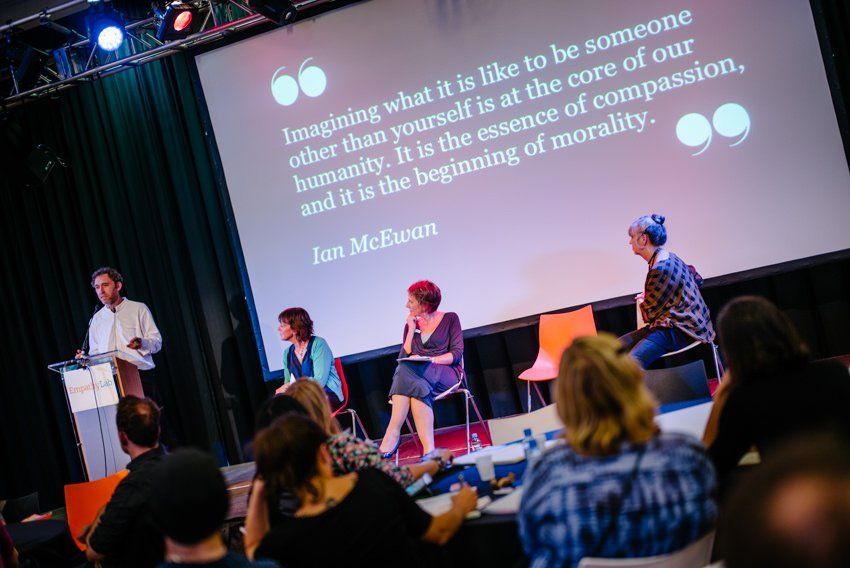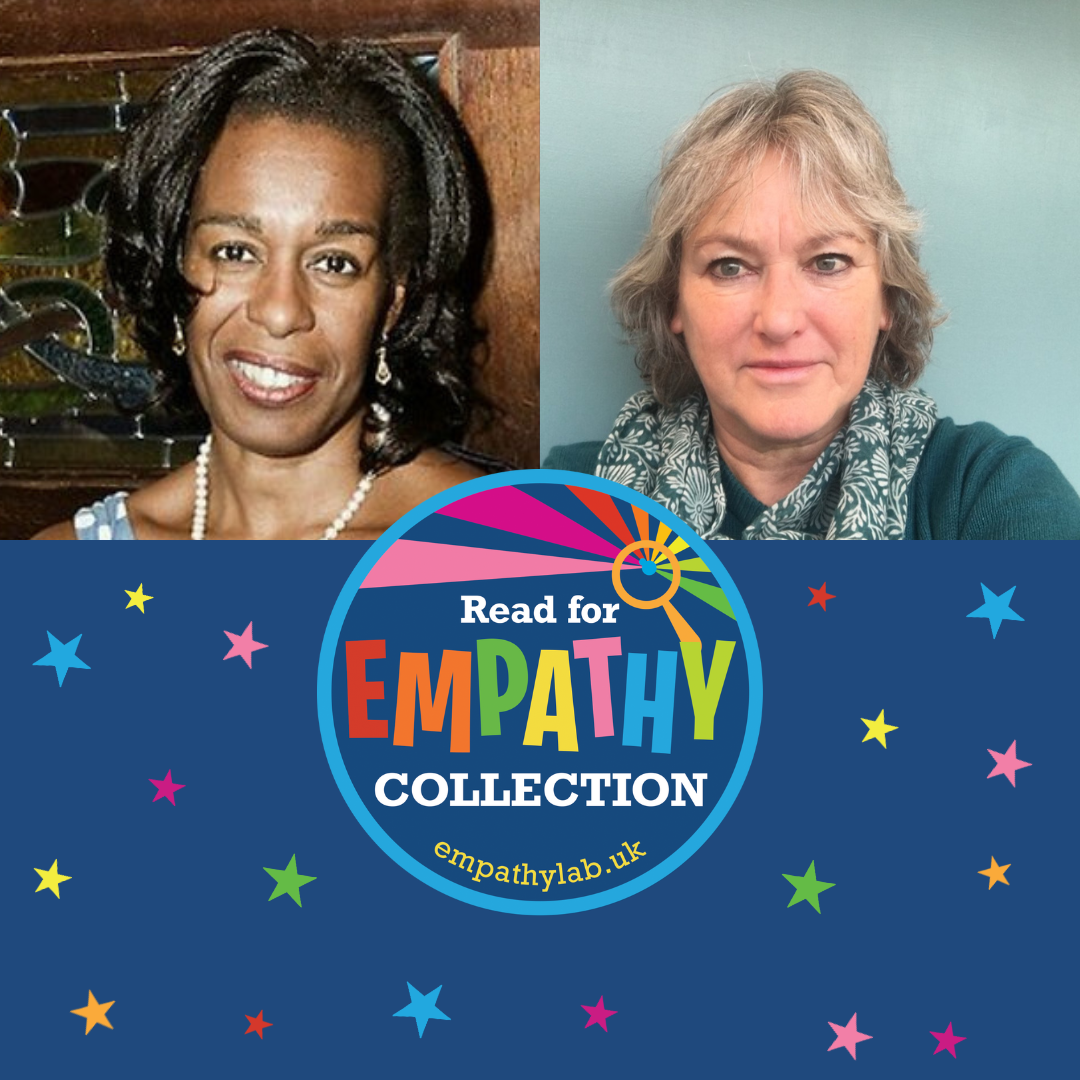THINK-IN THOUGHTS: HANNAH LOVE
- By EmpathyLab
- •
- 31 Jan, 2017
- •

So I was very keen to discuss this further, and the range of professional backgrounds at the event made for a fascinating evening. Getting perspectives from authors, psychologists, librarians and a host of other specialisms led to focussed discussions on what we deemed empathy to actually mean, who we thought needed training in empathy, and how we might go about implementing changes in the future. I found the two speakers, Roman Krznaric and Sue Palmer to be further proof that the earlier children are introduced to ideas of empathy the better, and that stories are the best catalyst for this growth.
Titles of books that sparked empathy in us were celebrated with great excitement. For myself, it was Jacqueline Wilson, Malorie Blackman and Harper Lee who forced me to see the world differently as a teenager. But I could even trace back to Dogger by Shirley Hughes as a book that made me think about other people’s feelings as a toddler. It was almost universally agreed at both of my tables that stories and books were a successful way to get children thinking empathetically.
The challenges however are how to implement this, what age group to focus on and whether to go for a targeted or blanket approach. From my research, I know that whilst children can develop these skills from just reading some may need more help, as well as direction to the right sort of books. When the children I worked with were given time and support and encouraged to engage with stories, they considered the viewpoints of others more carefully. But making this a larger scale operation could be tricky. Another obstacle will be not making the study entirely focused on literacy, as this makes the assumption that children who are more successful academically do not need to be thinking about these issues, whereas in fact the reverse may sometimes be true.
I also agree that having authors involved, who have created characters often very different to them, can be inspiring to children, and where possible their help would be very useful. The EmpathyLab Think-In had all the right ideas about what would be useful, the next step is working out the best way to make that happen.
Hannah Love is Children’s Publicist at Faber & Faber.
Find out more about EmpathyLab’s plans and join our network on LinkedIn – we’d love you to be part of the conversation.
Photo credit: Dan Chippendale

The collection consists of 65 books for 3-16 year olds, each chosen for its unique contribution in building young people’s empathy.
The primary collection for 3-11 year has 40 books; the secondary collection features 25 books for 12-16 year olds.

I am very fortunate to have been on the Read for Empathy booklist judging panel over the past few years.
I’m also a practising classroom teacher so I would like to consider how the books on the list can influence what happens in a school.
Firstly, along with many other schools, reading aloud is an important part of our school day, every day, almost without fail. All the teachers at my school are aware of the EmpathyLab booklist, and often use it as a basis for choosing their next class read. Knowing that the books touch on important aspects of our children’s lives is key; we all understand how important representation is in stories. These are books that make a difference, that lead to passionate discussions in the classroom and can actually influence children’s behaviour .
The booklists become increasingly valuable. We have a couple of hundred empathy texts at our school – they are there on merit. Staff often refer to previous lists if there as a particular aspect of empathy that they want to include or share with the children.
Our Year 6 Reading Champions often seek out picture books from the list to take in to KS1 and Reception when they read stories, so we already have the next generation educating each other about the importance of empathy. I love the fact they often meet beforehand (they tend to work in twos) to discuss what questions they might want to ask the children once the story has been read. After each booklist is released, they also spend several of their Friday recommendation slots in assembly talking about a couple of the books. We have parents in on our Friday assembly so it’s a great way to share the texts with them and help raise their awareness of our work.
We often use the books as our teaching texts for English, partly because they encourage excellent writing but also because they provide a fantastic opportunity for our pupils to develop their empathy skills. The Wild Robot by Peter Brown, Miraculous Journey of Edward Tulane by Kate DiCamillo, Freedom by Catherine Johnson, Eyes that Kiss in the Corners by Joanna Ho and A Street Dog Named Pup by Gill Lewis are all books that have made in into our English curriculum as a result of being on one of the Read for Empathy booklists. Well, that’s not strictly true - Edward Tulane was there before that as it’s one of my favourite ever books, but you hopefully take my point.
Reflecting on our empathy journey over the past few years, I’ve also found that the more books children read that address empathy, where they can relate to the characters and their choices, the more books they want to read. It’s almost a virtuous circle. Many begin to realise that such books can empower them to think about situations.
For example, as soon as we finished A Street Dog Named Pup last year, several of them immediately wanted to read other books by Gill Lewis. Because empathy is a thread that runs through much of her work ( Gorilla Dawn , Moon Bear , The Closest Thing to Flying and so on). Thanks to EmpathyLab's lists, I was able to point them in the direction of several other books, by her and others.
I think we agree that teaching children about empathy and providing them with opportunities to develop it is one of the most important gifts we can give them as adults. The fact that empathy has gone from being something that schools sort of understood a few years ago to being something that has got an increasingly solid evidence base is crucial.
There’s always been anecdotal evidence that reading stories is important for children and that it can change how they think but now that’s backed up with research. The empathy revolution (and it is a revolution) is only going to pick up more momentum over the next few years as the need for it becomes ever more apparent. Working in schools and in the world of children’s books means that we’re in the front line. There’s nowhere else I’d rather be.
